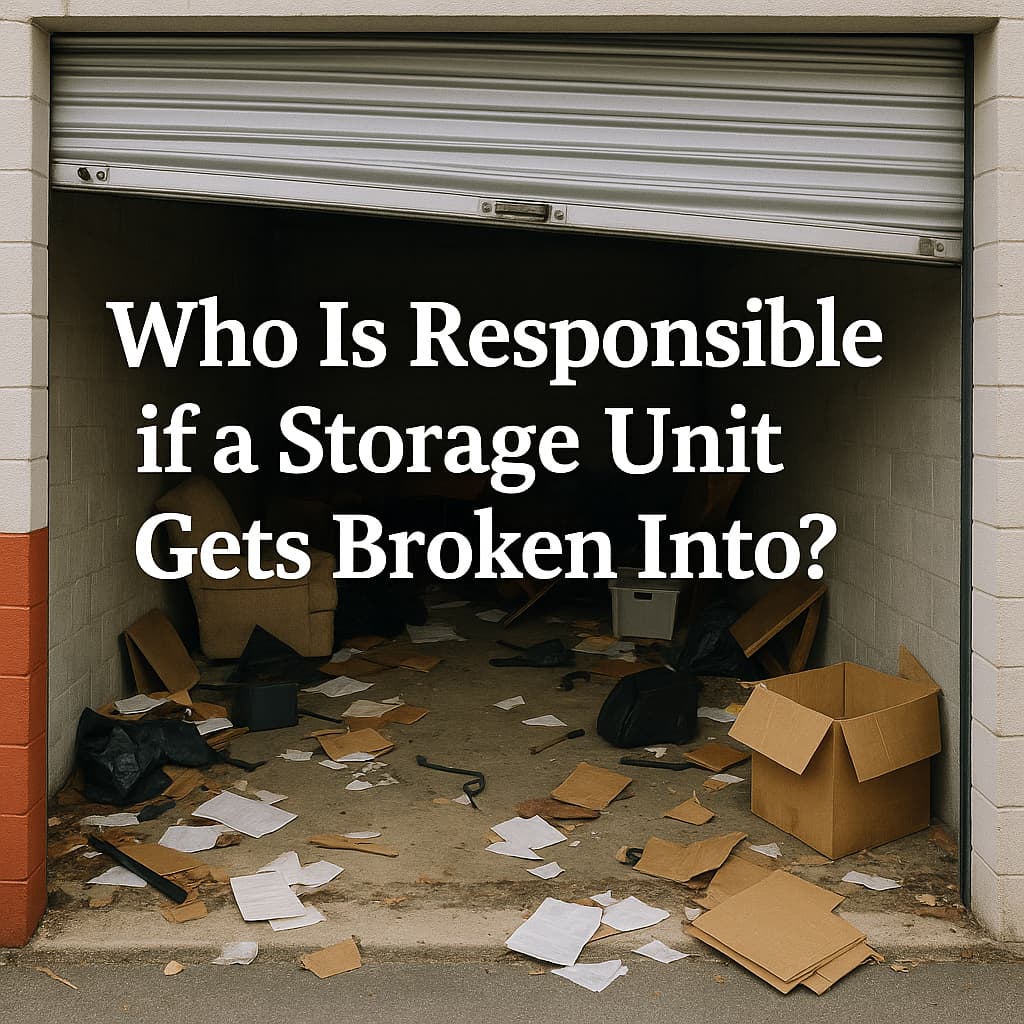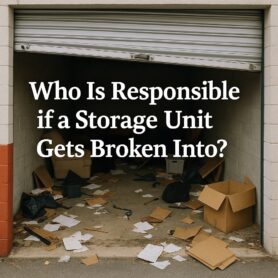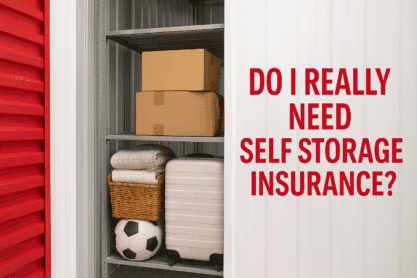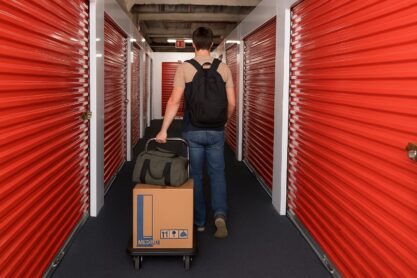In the UK, you are usually responsible if your storage unit is broken into. Storage companies are only liable if negligence is proven, like if they decided to ignore broken locks or conveniently switched off the CCTV just when thieves strolled in.
Shocked? You’re not the only one. Most people assume that once their stuff is tucked behind a heavy metal door on someone else’s premises, the company carries the can. After all, it’s their unit, their cameras, their fence. But unless they’ve clearly dropped the ball, the responsibility sits squarely with you.
This guide will cover when a facility could be at fault, how insurance steps in, and the best ways to keep your belongings safe.
Key takeaways
-
-
If your stuff is stolen from a storage unit, the facility isn’t to blame unless they were negligent.
-
Proving the facility was at fault is very difficult to prove in practice.
-
Insurance covers that gap and is usually required, covering the cost of your stolen items.
-
Standard insurance caps start at £5,000 unless you declare higher values or get written approval.
-
High-value items (jewellery, antiques, cash, collectibles) often need specialist cover, which storage companies don’t often provide.
-
Heavy-duty locks, regular check-ins, and a clear inventory all help strengthen your case if something goes wrong.
-
If a break-in occurs, act fast: report it, document everything, and file your insurance claim.
-
When is the storage facility liable?
In theory, a storage company can be held liable if they have been negligent. In practice? Good luck proving it. Negligence means they have failed to take “reasonable care,” which is the legal standard in the UK.
That could look like:
-
Gates left broken for weeks without repair, making it easy for intruders to slip in
-
Faulty locks or alarms that staff knew about but ignored
-
CCTV cameras that are switched off or not actually recording
-
Corridors left unlit or blind spots with no visibility
-
Access codes not revoked for ex-customers, leaving open doors for abuse
-
Reusing locks between customers without proper security checks
-
Advertising regular staff patrols that never actually happen
In reality, customers rarely win these cases. You would need solid proof the facility failed in its duty of care, such as ignored security faults or evidence promised systems were not working. Without that, courts almost always side with the storage company.
Note: Henfield Storage’s own terms reflect this as well. Goods are stored at your own risk, and customers must report any defects promptly. They also are not liable for events outside their control unless fault is proven beyond doubt.
How Does Storage Insurance Protect Me?
Storage insurance has one job: to pay out if your stuff gets stolen or damaged. Without it, you are left footing the bill yourself, plus the wasted legal costs if you try (and fail) to pin it on the storage company. This is especially important if you’re storing stock or equipment tied to your livelihood. If you’re wondering about the rules around running a business from storage, see our piece on can you run a business from a storage unit.
Most policies cover the usual suspects: theft, fire, flooding and accidental damage. Standard cover starts at about £5,000, but pricier items like jewellery need to be declared or put under specialist cover.
Henfield Storage offers insurance if you do not fancy arranging your own. Either way, the cover has to match the full replacement value of your goods. Cut corners and underinsure, and you will only get part of your claim back.
Still, more than one in three UK storage customers skip insurance altogether. That gamble makes the cost of a policy look cheap. To learn more about what storage insurance covers and how it works, check out our full guide on self storage insurance.
How to Choose a Secure Storage Facility
Most importantly, you’ll want to find a reputable storage facility that actually has robust security features and protocols in place, such as:
- Round-the-clock CCTV surveillance. The good news is that 82% of UK facilities now offer it.
- Gated entry, perimeter fencing, and staff who are attentive.
- Critical areas that are clearly visible for staff to monitor.
- The facility’s condition. Neglected sites often signal poor security.
If you’re unsure, check reviews to see how others rate the facility’s security and service. 35% of customers already rely on reviews to make their decision.
Besides just relying on your facility, you can help secure your items by using a strong lock (disc or cylinder locks work best), keeping an inventory, and visiting your unit occasionally.
What to do after a storage break-in
First, stay calm and don’t rush to point fingers. If your storage unit has been broken into, act quickly and work through these steps:
-
Tell the facility: Report it immediately so they can log it and check security systems.
-
Call the police: File a report and get a crime reference number.
-
Take photos: Record the damage and note what’s missing.
-
Claim on insurance: Contact your provider with your inventory and receipts.
-
Follow up: Ask the facility for updates on their investigation.
-
Reinforce: Upgrade your lock, adjust cover, or move to a more secure site if needed.
Handled properly, a break-in is stressful, but with insurance and good records, it doesn’t have to wipe you out financially.
If you believe the storage company was at fault
If you suspect the storage played a role in your items being stolen, proper documentation is your key to standing firm. That means taking photos of broken gates, faulty locks, or any other security issues that were potentially ignored. Report the problem to the facility immediately and consult a legal professional to understand your rights and what action you can take. Proving this is difficult, but it’s important to know your options.
Store Smarter, and Safer with Henfield Storage
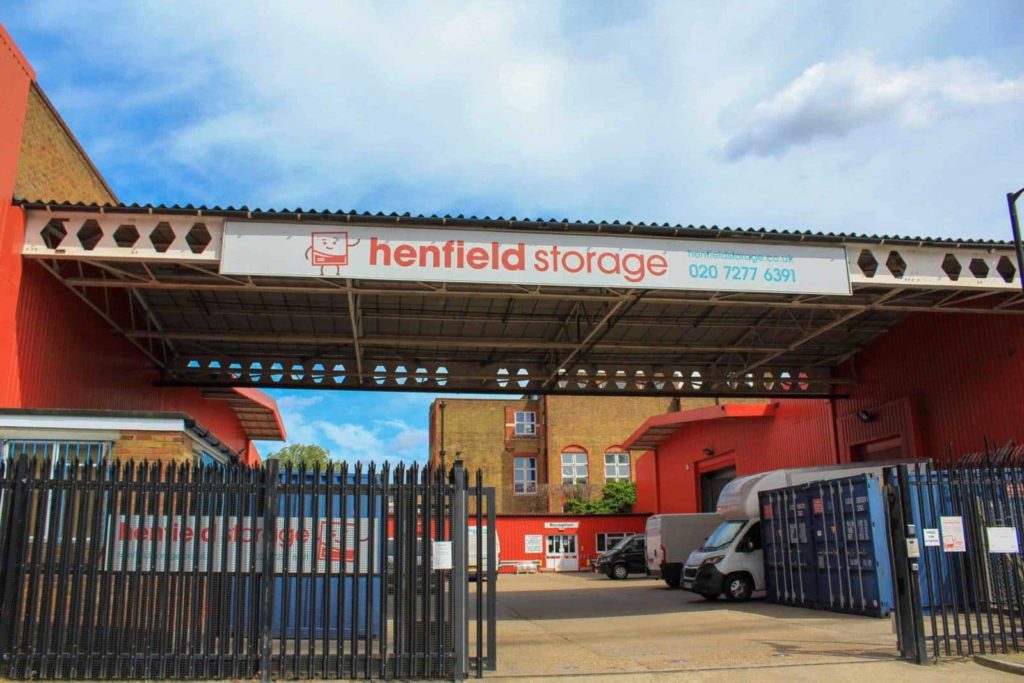
Looking for a storage unit that feels as safe as your own home? At Henfield Storage, every site is equipped with:
- 24/7 colour CCTV
- Intruder alarms linked to monitoring stations and the police
- Motion-sensitive lighting
- Professional staff on site during opening hours
- Your goods are stored inside sturdy steel rooms, and access is locked down with a padlock you control.
Pair that with the right insurance and you’ll have complete peace of mind when storing your belongings.
Ready to rent a unit that’s both secure and affordable? Get a quick storage quote in London or Brighton from Henfield Storage today.
Frequently Asked Questions
Am I or the storage company responsible if my unit is broken into?
In almost every case, it’s you. Storage agreements in the UK usually state that your belongings are kept at your own risk. This means if there is a break-in and your items are taken, you’ll need to rely on your insurance to cover the loss.
Can I claim against a storage company after a break-in?
It’s possible, but very hard. You’d need solid evidence that promised security wasn’t in place, like ignored broken locks or cameras that weren’t recording. Most customers find insurance is the safer and quicker way to recover losses.
What does storage insurance cover?
Most policies cover theft, fire, flooding and accidental damage. Standard cover is around £5,000, but you’ll need to declare higher values if your goods are worth more. High-value items such as jewellery, antiques, cash or collectibles usually need specialist cover.
What should I do if my unit is broken into?
Act fast. Report it to the facility, file a police report, take photos and contact your insurer. Having an inventory makes the claim process much smoother.
How do I choose a secure storage facility?
Look for round-the-clock CCTV, PIN-controlled access, on-site staff and strong customer reviews. Over 80% of UK sites already use monitored CCTV, so if a facility doesn’t, that’s a red flag.

